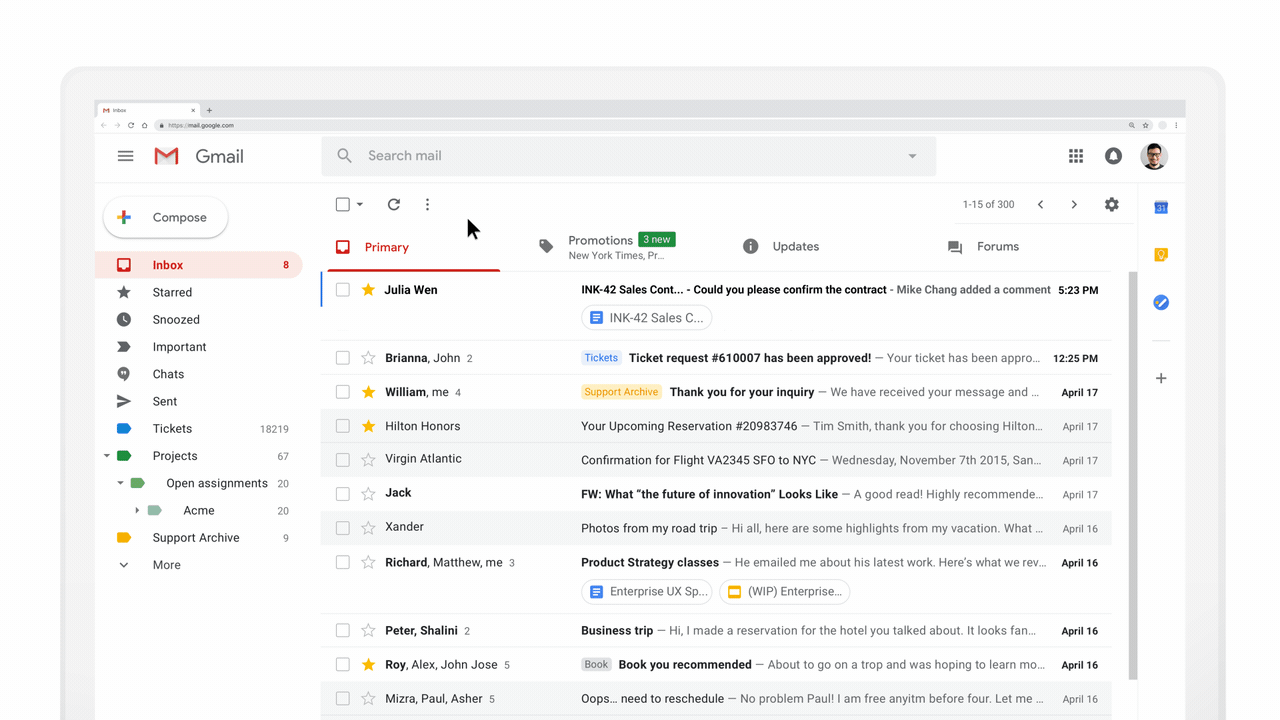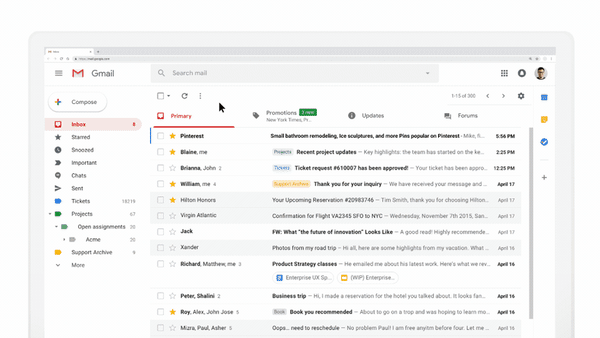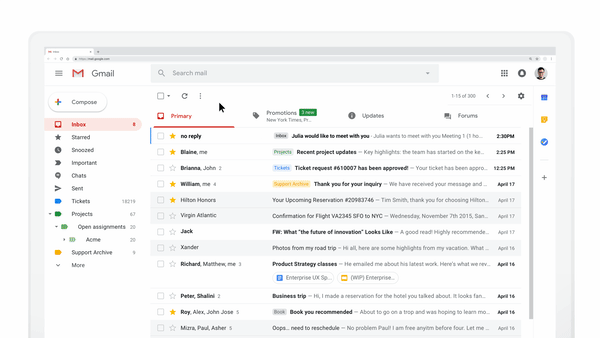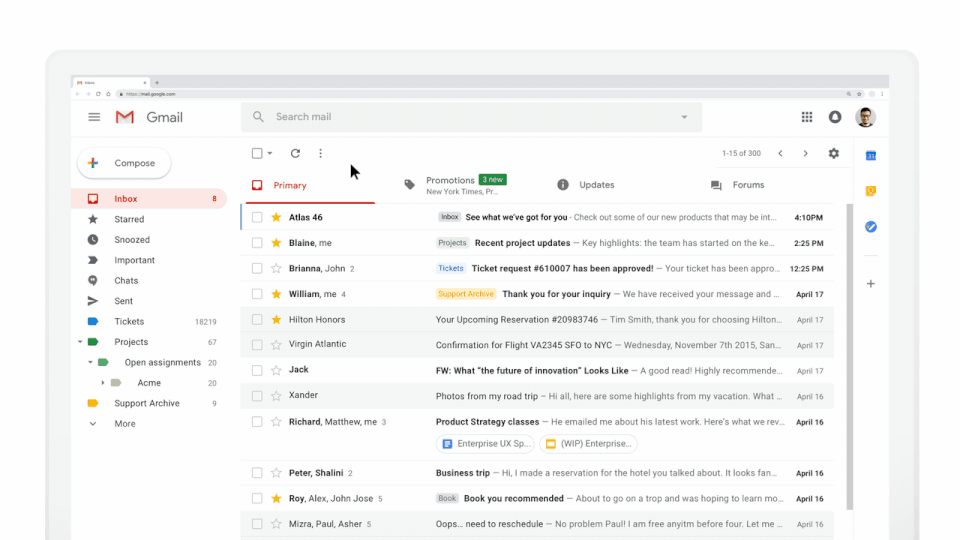Google’s Next Revolution: AMP for Email

The evolution of email has been slow and steady. While there have been incremental changes over time—the addition of visual elements, the ability to segment lists, etc.—the basic idea of static messages sent back and forth via the Internet has essentially stayed the same.
That may be about to change. Google recently announced the full rollout of AMP for Email—also called dynamic email—a potentially transformative new approach.
What exactly is AMP for Email? How does it work? Why is it such a big deal? How can it be utilized by brands?
Here’s what marketers need to know:
What Is AMP for Email?
Accelerated Mobile Pages (AMP) is an open source framework built by Google and Twitter. It was originally developed to boost the speed at which web content loads on mobile devices and works by creating streamlined versions of pages, similar to Facebook Instant Articles.
AMP for Email is an initiative from Google that utilizes the same technical framework, but with a different goal: the intent is to enable interactivity in emails rather than decrease load time on web pages. Essentially, Google realized that with AMP it had created a fast, secure, speedy, and lightweight approach that could finally make email a truly dynamic channel.

What’s the big deal?
When it comes to digital innovations, words like “interactive” and “dynamic” get thrown around so much that they lose their meaning. In this case, though, those descriptors are accurate: AMP for Email is a big deal because it transforms messages from being one-directional and set (static) to two-directional and constantly updated (interactive, dynamic).
The key thing to understand about dynamic emails is that it’s the messages themselves that are changing—people can take actions directly within them without having to reply or click through to a webpage.
As Google puts it, “AMP now enables all-new email experiences like being able to submit RSVPs to events, fill out questionnaires, browse catalogs, or respond to comments right within the email. Emails can also stay up to date, displaying the freshest content from comment threads or the latest recommendations.”

What does AMP for Email look like in action?
The AMP framework is made up of components that essentially are building blocks for experiences. There are already a number of these for email, including the ability to click through image carousels, fill out forms, select items from a list, and view continually updated visualizations (see the full list of components here).
As senders learn how to work with these components and as more are added, the uses for AMP for Email should become clearer. Still, it’s possible to glimpse the possibilities of the approach in some of the technology’s beta programs.
For example, Pinterest, which was given early access to AMP for Email last year, has already developed sophisticated campaigns in which recipients can navigate through messages just as they would through web pages.

Is AMP for Email mainstream?
While AMP for Email/dynamic email was in beta, messages were primarily delivered to G Suite users. Google is now extending availability to all Gmail users, and Yahoo Mail, Outlook, and Mail.ru have said that they’ll soon support the framework.
Moreover, Google has been working with various email delivery and analytics platforms, such as Litmus, Twilio SendGrid, and Amazon Pinpoint, to make it easier for marketers to create, send, and measure AMP emails.
Put simply, AMP for Email is about to become mainstream. By the end of this summer, a sizeable share of email users will be able to take actions such as scrolling through galleries and booking appointments directly within messages.

What does AMP for Email mean for brands?
It may sound hyperbolic, but AMP for Email has the potential to be transformational for marketers.
Until now, campaigns had to spark action outside of messages themselves; the goal was to inspire recipients to do things like reply or click through to web pages. Now, actions can be taken within emails. That’s a huge shift.
Again, the uses of the technology are just beginning to be explored, but it’s easy to see some of the many possibilities for businesses: emails that enable scrolling through product galleries, booking service appointments, interacting with customer service agents, comparing real-time prices, and even directly making purchases.

How can marketers learn more?
Google has created this useful resource center to help people understand how AMP for Email works and the technical guidelines. The company also maintains this AMP blog, which is worth keeping an eye on since the approach is sure to be refined to over time.
It’s also a good idea to take a look at this recent keynote given by Aakash Sahney, a product manager on the AMP team at Google. It covers the AMP for Email framework in depth, the timeline for its rollout, and some exciting potential uses. The presentation isn’t short (it’s close to 50 minutes long), but given that the technology could revolutionize email in the coming years, watching it is probably a worthwhile time investment for marketers.
Stay up to date on the evolution of dynamic email. Contact MDG today at 561-338-7797 or visit www.mdgsolutions.com.
MDG, a full-service advertising agency with offices in Boca Raton and Brooklyn, NY, is one of Florida’s top branding firms. MDG’s capabilities include marketing, branding, logo design, creative, media buying and planning, radio and TV advertising, print advertising, direct mail, outdoor, newspaper, digital marketing, website design and development, online video advertising, infographic development, email marketing, video marketing, mobile marketing, content marketing, social media marketing, paid search marketing, and SEO. To learn about the latest trends in advertising and branding, contact MDG today at 561-338-7797 or visit www.mdgsolutions.com.
